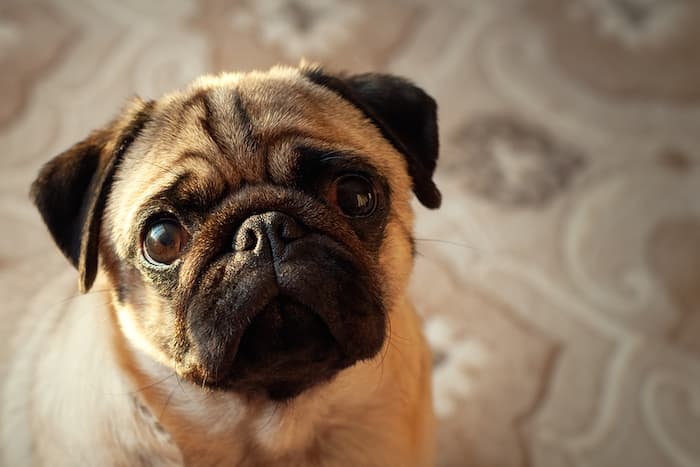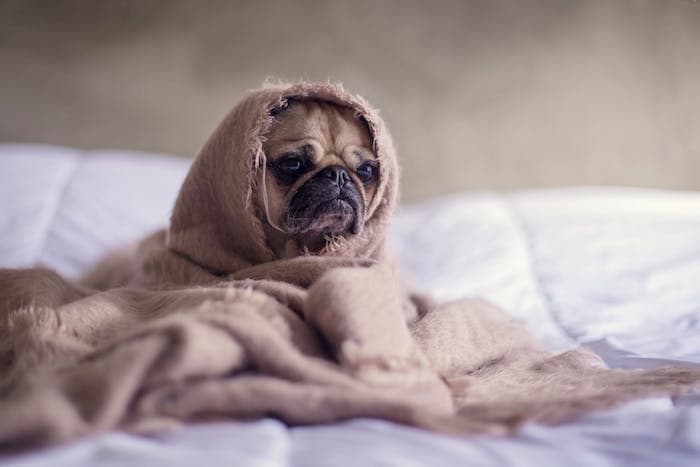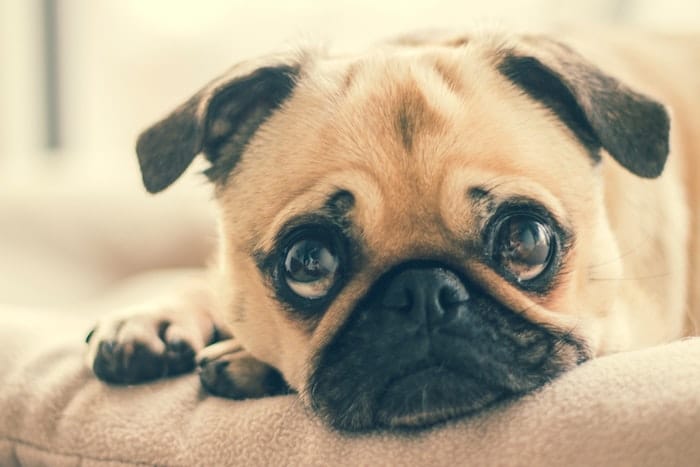Pug puppies are known for their high levels of energy, and this is something you’ll notice right away. He will play with anyone and everyone he comes across. At first, it’s a lot of fun and entertainment, but you’ll soon find yourself unable to keep up, and your cute puppy will transform into a real handful.
They’re naturally clever, and no matter how hard you try, your dog will always find a way to get into a specific place or play with a specific item.
Since pugs may be entertained both inside and outside the home, they’re an excellent choice for those living in apartments or houses with little space. They also do well in locations that aren’t too hot or too cold, like the Midwest or the northeast.
Be aware that pugs enjoy social interactions and should not be left alone for prolonged periods of time. Grooming is a breeze for a pug because its coat is short and glossy, making it easy to care for.
House training a puppy is a process that involves several stages. This is a straightforward procedure that can be completed in a few days if you are patient. Keep these tips in mind as you begin to train a pug puppy. Check on How Smart are Pugs? https://pugshome.com/how-smart-are-pugs/.
Why Should You Put in the Time and Effort to Train, Your Dog?
We teach our Pugs to avoid urinating and defecating on your carpet. Ensure that they don’t ruin your furniture and shoes by training them. Whether you like it or not, this angel constantly steps on your stomach and other sensitive areas. Pugs treat you like a piece of furniture if you don’t train them.
Pug training is beneficial for your canine friend’s mental and physical well-being. Train your pugs well, and they’ll love you for it. You’ll become even closer as a result of this experience. Pug time is always in short supply, no matter how close you and your dog are. The more you train your Pugs, the more treats they get! So, it’s a win-win!
How to Train A Pug, The Basics?
Be Patient to Train, a Pug
When teaching your pug new commands, it’s important to take your time. Take note of the fact that it will be a constant presence in your thoughts and actions. Keep in mind that when teaching certain actions, use your hands and a comfortable training leash, and use a patient yet firm voice.
The key to training a pug is to use repetition and action until the behavior becomes ingrained in their brain. Don’t forget to correct your pug if it does something wrong. Reward it for a job well done with kind words and pats on the back. Rewarding sloppiness and complacency is a slippery slope, so keep it to a minimum. There should be a distinct separation between the time spent teaching your pug to sit and the time spent playing with him.
Short Training Sessions Are the Appropriate Way to Train A Pug
You don’t have to devote an hour or two of your day to practice every day. When it comes to training, the opposite is often true. Angry and dejected because your dog isn’t listening, your dog will reflect you in its demeanor.
The most productive results can be achieved by training for just five minutes at a time. Puppy training sessions should not last longer than necessary due to their short attention spans.
Settle on Easy Cue Words
In order for dogs to grasp new concepts, they must be given concrete examples of what a word or phrase means in context. When it comes to potty train a Pug puppy, you should use a specific phrase each time you take him outside to relieve himself. This phrase will be used again to signify the completion of the task and the distribution of rewards (details ahead).
Some of the most common responses include “poop time,” “pee quick,” and “potty time.” Make sure you don’t mind saying it aloud before other people before deciding on a phase.
Hire a Pet sitter to Walk Your Dog
It’s best to have someone else walk your dog while you’re at work. Perhaps it’s too pricey. Pug puppies that are too young to walk on a leash should have the puppy pad changed and taken outside once a day.
Final Words
Most people believe that Pugs are untrainable and require the services of a professional dog trainer, but this is simply not the case. Since this is your first time owning one of these animals and the trainers are experts in the field, they will have ideas and insights you don’t have.
One session will not, under any circumstances, be enough for any trainer to make a significant dent in your dog’s behavioral issues. In order to properly train your puppy or dog to be a well-behaved companion, you must be patient and consistent.
Related Reading



